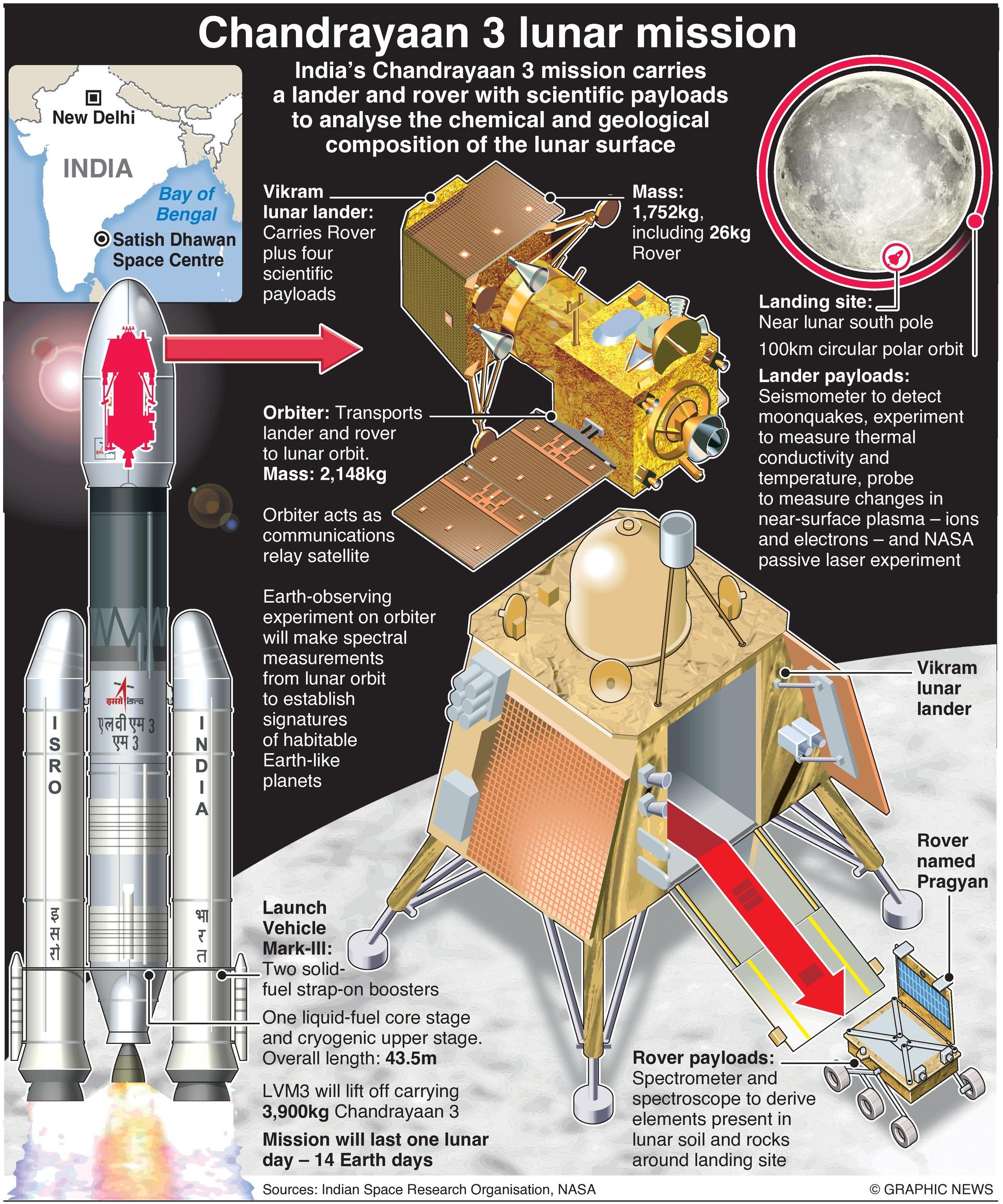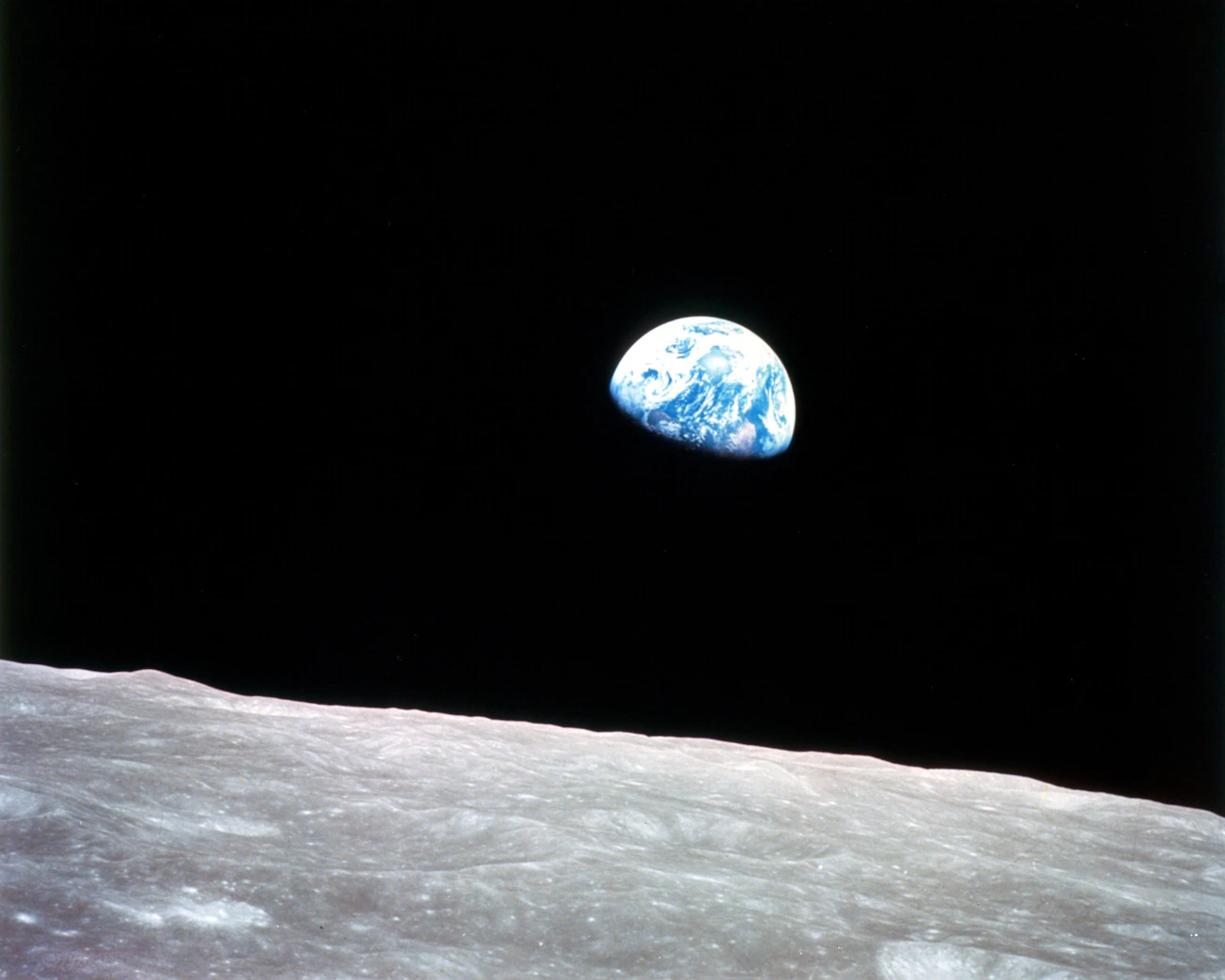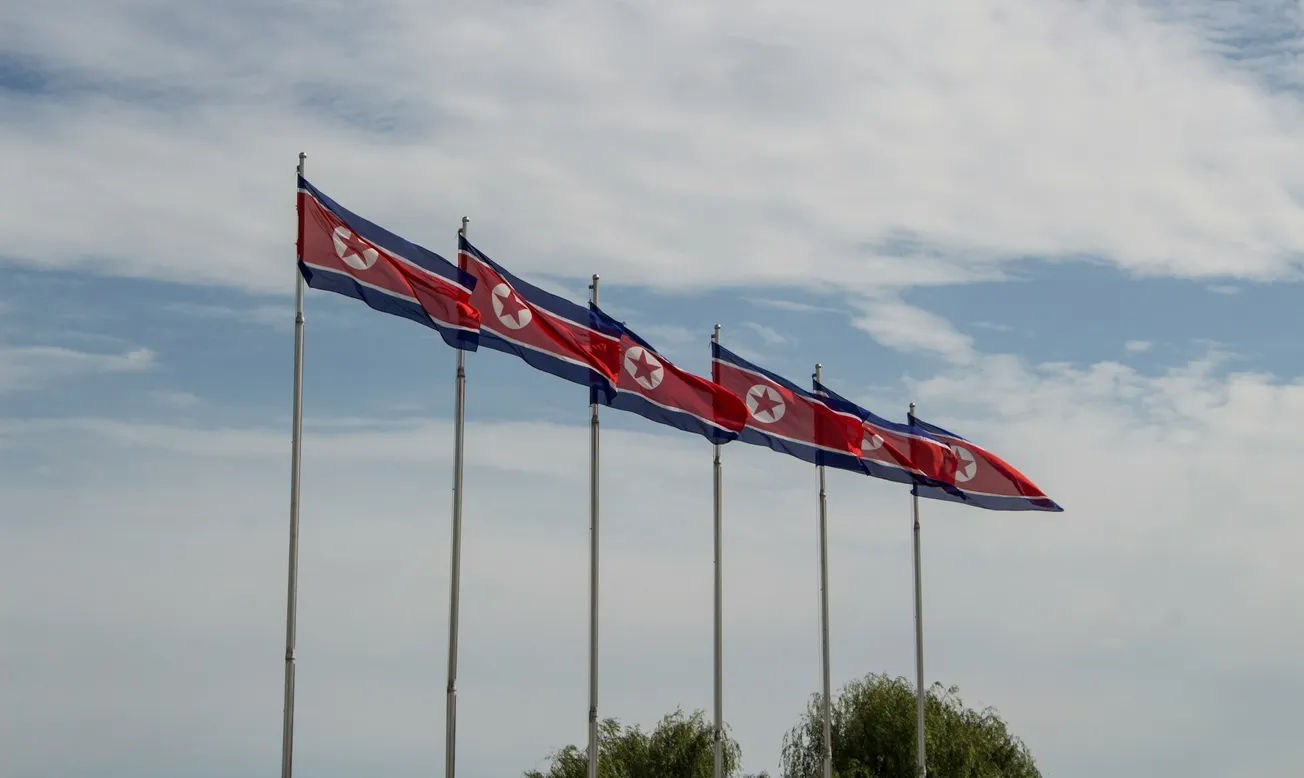India’s Chandrayaan 3 mission carries a lander and rover with scientific payloads to analyse the chemical and geological composition of the lunar surface.

The Indian Space Research Organisation (ISRO) plans to launch from Satish Dhawan Space Centre, Sriharikota, on July 13 at 14:30 local time (09:00GMT) and will be aboard a Launch Vehicle Mark-III or LVM3.
“We are aiming for the earlier part of this launch window, instead of pushing it to the latter part,” Isro chairman Sreedhara Somnath said.
The main objectives of the mission are threefold. They are first achieving a safe and soft landing on the Moon, demonstrating the rover’s ability to move around on the lunar surface, and conducting in-situ scientific observations, focusing on the Moon’s composition.
An orbiter will carry the lander-rover combination to a 100km lunar orbit.
The Vikram lander will have four payloads, including a seismometer to detect moonquakes and a LASER Retroreflector Array (LRA).
The six-wheeled Pragyan rover will have two payloads -- two spectrometers will attempt to find materials from the ancient lunar crust.
In addition, there will be one payload on the orbiter, the SHAPE Earth-observing experiment, to measure spectral and polarimetric radiation and understand what signatures of habitable Earth-like planets could look like.
If successful, Chandrayaan-3 will make India the fourth nation to land on the Moon, following the Soviet Union and the United States in 1966. China became the third nation in 2013 with its Chang’e-3 mission.









